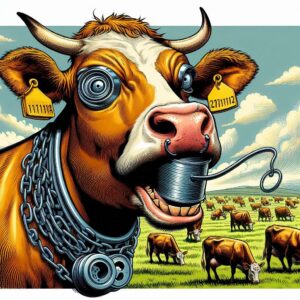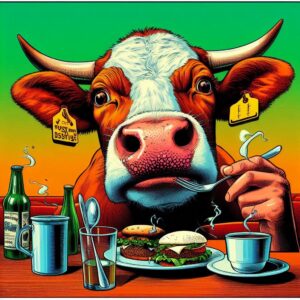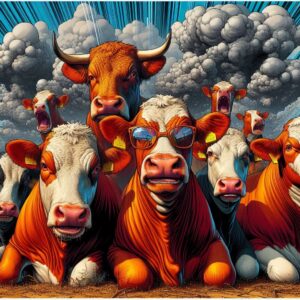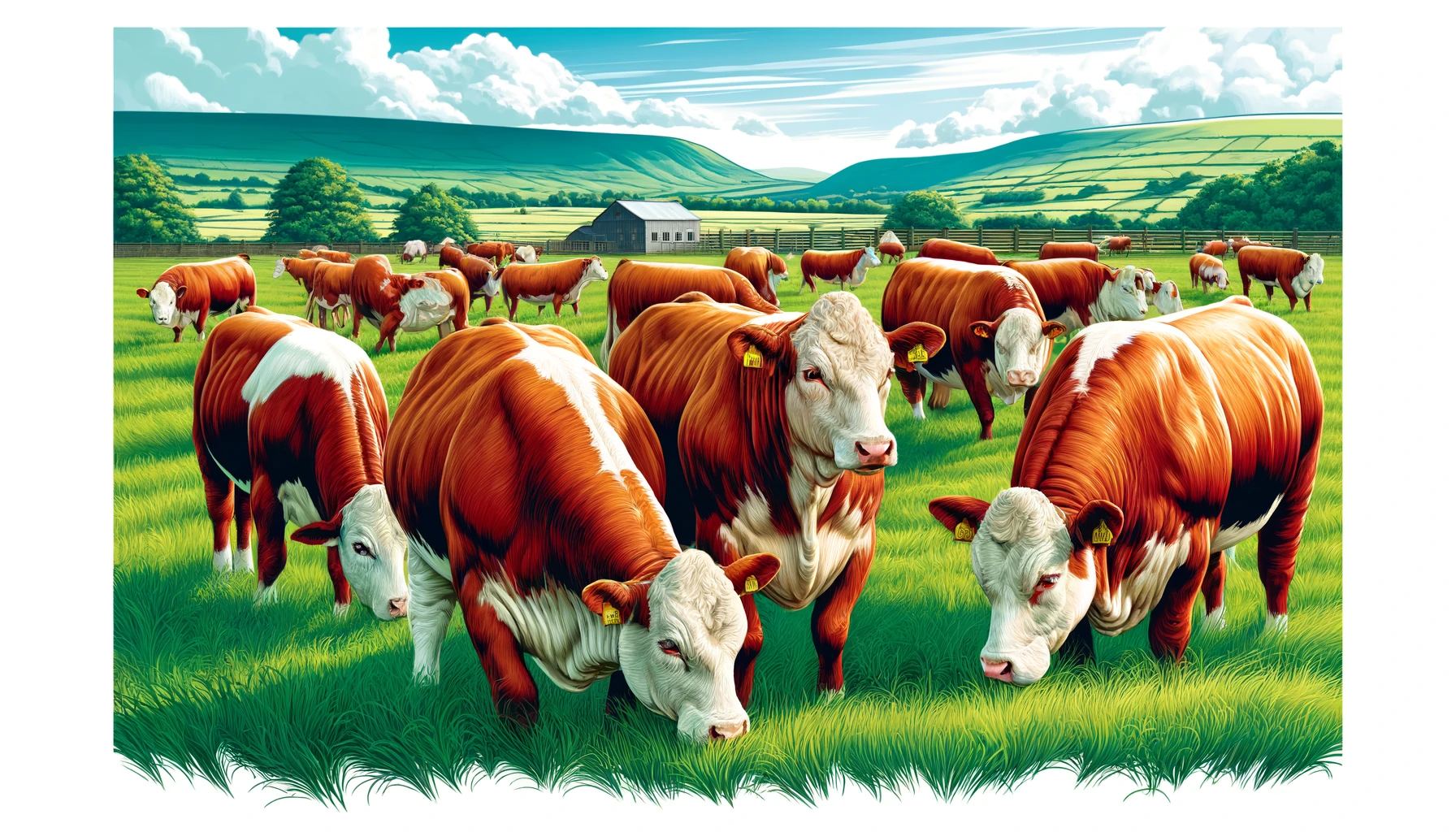Simmental Cattle: Status and Significance
Success Stories: Simmental Cattle
Simmental cattle are a breed of beef and dairy cattle known for their large size, distinctive color pattern, and versatility. Originating from the Simme Valley of Switzerland, Simmentals are one of the oldest and most widely distributed cattle breeds globally, valued for their adaptability, high milk production, and superior meat quality.
Historical Background
The Simmental breed has a history dating back to the Middle Ages. Named after the Simme Valley in the Bernese Oberland of Switzerland, these cattle were initially bred for their dual-purpose traits, excelling in both meat and milk production. Simmental cattle were introduced to other parts of Europe in the late 19th century and subsequently to the United States in the 1960s, where they have since become a prominent breed.
Physical Characteristics
Simmental cattle are characterized by:
- Coloration: Typically red and white, although black and white variants exist. The red color can range from dark red to yellowish-brown.
- Size: Large and robust, with mature bulls weighing between 2,200 to 2,800 pounds and cows between 1,200 to 1,600 pounds.
- Muscle Development: Well-muscled with a strong frame, contributing to high carcass yield.
- Milk Production: High milk yield with good butterfat content, making them suitable for dairy production.
Adaptability and Distribution
Simmental cattle are highly adaptable and thrive in a wide range of environments, from temperate to tropical climates. Their versatility has led to their widespread distribution across continents, including Europe, North America, South America, and Africa. The breed’s ability to perform well in both beef and dairy operations makes it a valuable asset in various agricultural systems.
Economic Significance
Meat Quality
Simmental cattle are prized for their meat quality, characterized by:
- Lean Meat: High muscle-to-fat ratio, providing tender and flavorful cuts.
- Carcass Yield: Excellent dressing percentage, making them profitable for beef producers.
- Growth Efficiency: Rapid growth rates and efficient feed conversion lead to earlier market readiness.
Dairy Production
Simmental cattle are also valued for their dairy production capabilities:
- Milk Yield: High milk production with substantial butterfat and protein content.
- Dual-Purpose Use: Their ability to produce both high-quality beef and substantial milk makes them ideal for dual-purpose farming operations.
Breeding and Crossbreeding
Simmental cattle play a significant role in breeding programs:
- Genetic Improvement: Often used to enhance traits such as growth rate, milk production, and adaptability in crossbreeding programs.
- Hybrid Vigor: Crossbreeding Simmentals with other breeds can result in offspring with improved growth, fertility, and overall hardiness.
Challenges and Considerations
Despite their many advantages, Simmental cattle face certain challenges:
- Market Preferences: Regional market preferences for specific beef or dairy characteristics can influence the popularity of Simmental cattle.
- Management Practices: Proper management is required to fully leverage the breed’s potential, including nutrition, healthcare, and breeding strategies.
- Calving Difficulties: The large size of Simmental cattle can lead to increased instances of calving difficulties (dystocia), requiring careful management.
Simmental Cattle in Modern Agriculture
Simmental cattle are integral to modern agriculture, particularly in sustainable beef and dairy production systems. Their versatility, high productivity, and adaptability make them suitable for both small and large-scale operations.
Case Study: Simmental Cattle in the United States
The United States is a key region for Simmental cattle:
- Population: Simmentals have a significant presence in the U.S. beef and dairy industries.
- Industry Support: Organizations like the American Simmental Association provide resources for breeders, including genetic testing, marketing support, and educational programs.
- Innovation: U.S. Simmental breeders continually adopt new technologies and practices to enhance the breed’s performance and profitability.
Future Outlook
The future of Simmental cattle looks promising with advancements in:
- Genomics: Utilizing genetic tools to improve traits such as feed efficiency, disease resistance, and meat and milk quality.
- Sustainability: Emphasizing sustainable breeding and management practices to meet environmental and consumer demands.
- Global Expansion: Continuing to explore and expand into new markets while maintaining high standards of meat and milk quality and animal welfare.
Conclusion
Simmental cattle hold a prominent place in the global beef and dairy industries due to their adaptability, superior meat and milk quality, and economic viability. As agriculture evolves, Simmental cattle will likely continue to be key players in sustainable and efficient beef and dairy production systems.
Keywords
- Beef cattle
- Simmental breed
- Meat quality
- Dairy production
- Crossbreeding
- Sustainable agriculture
How Knowledge of Simmental Cattle Can Help Farmers
Understanding the significance and status of Simmental cattle can help farmers make informed decisions about breeding, management, and marketing strategies. By leveraging the breed’s strengths and addressing its challenges, farmers can enhance productivity, meet market demands, and contribute to sustainable agricultural practices.
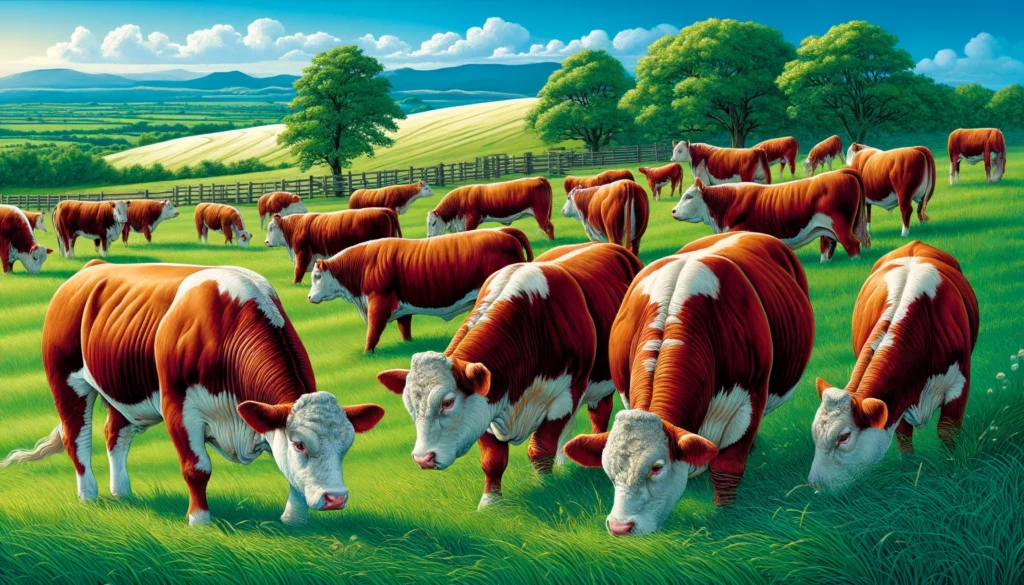
Helpful Content for Ranchers: Optimizing Simmental Cattle Management
Definition: Simmental Cattle Management
Simmental cattle management encompasses the practices and strategies employed by ranchers to ensure the health, productivity, and profitability of their Simmental herds. Effective management involves considerations of nutrition, breeding, healthcare, and marketing to maximize the benefits of raising Simmental cattle.
Nutritional Strategies for Simmental Cattle
Grass-Fed vs. Grain-Fed Systems
Ranchers can choose between grass-fed and grain-fed systems for raising Simmental cattle:
- Grass-Fed: Promotes natural grazing behavior and produces leaner beef and high-quality milk. Supports sustainable practices and may attract health-conscious consumers.
- Grain-Fed: Typically results in faster weight gain and higher muscle mass, catering to mainstream consumer preferences for beef, and higher milk yield for dairy operations. Requires careful management of feed quality and quantity to avoid health issues.
Supplementation
Regardless of the primary feeding system, supplementation is crucial:
- Mineral and Vitamin Supplements: Ensure balanced nutrition, particularly in regions with nutrient-deficient soils.
- Protein Supplements: Important during periods of low forage quality to maintain growth rates and reproductive performance.
Breeding and Genetics
Selecting Superior Genetics
Ranchers can enhance their Simmental herds by:
- Artificial Insemination (AI): Allows access to superior genetics without the need to purchase high-cost breeding bulls. Facilitates genetic diversity.
- Embryo Transfer (ET): Enables rapid multiplication of desired genetics, especially from elite females.
Crossbreeding Programs
Incorporating crossbreeding can improve herd performance:
- Hybrid Vigor: Crossbreeding Simmentals with other breeds can result in offspring with enhanced growth rates, feed efficiency, and overall hardiness.
- Trait Selection: Focus on traits such as disease resistance, fertility, carcass quality, and milk production to meet specific market demands.
Health and Welfare
Preventative Healthcare
Implementing a comprehensive healthcare plan is vital:
- Vaccination Programs: Regular vaccination against common bovine diseases ensures herd health and productivity.
- Parasite Control: Effective management of internal and external parasites through deworming and insect control measures.
Welfare Practices
Maintaining high welfare standards is not only ethical but also enhances productivity:
- Stress Reduction: Minimize handling stress by using low-stress handling techniques and providing adequate shelter and comfort.
- Monitoring and Intervention: Regular health checks and prompt intervention for any signs of illness or injury.
Marketing and Economic Considerations
Direct Marketing
Exploring direct marketing avenues can enhance profitability:
- Farmers’ Markets: Selling directly to consumers at local markets can provide higher returns compared to traditional channels.
- Online Sales: Leveraging e-commerce platforms to reach a broader customer base.
Value-Added Products
Creating value-added products can diversify income streams:
- Processed Meats: Offering products such as jerky, sausages, and specialty cuts can attract niche markets.
- Dairy Products: Producing and marketing high-quality milk, cheese, yogurt, and other dairy products can enhance profitability.
- Agri-Tourism: Incorporating farm tours, farm stays, and educational workshops to generate additional revenue and promote the Simmental breed.
Case Study: Sustainable Simmental Ranching
A case study of a successful Simmental ranch:
- Location: Mountain View Simmental Ranch, Colorado.
- Practices: Emphasizes rotational grazing, conservation practices, and direct marketing.
- Outcomes: Achieved high profitability and community recognition for sustainable practices and superior beef and dairy quality.
Future Trends in Simmental Cattle Ranching
Technological Advancements
Embracing technology can optimize ranching operations:
- Precision Agriculture: Using GPS and data analytics to manage grazing patterns and monitor herd health.
- Genomic Testing: Enhancing breeding decisions through detailed genetic information.
Market Trends
Staying informed about market trends ensures competitiveness:
- Consumer Preferences: Growing demand for lean, high-quality beef and dairy products.
- Regulations: Adapting to changes in food safety and animal welfare regulations.
Conclusion
Effective management of Simmental cattle involves a combination of nutritional strategies, genetic improvement, health and welfare practices, and innovative marketing approaches. By staying informed and adopting best practices, ranchers can maximize the productivity and profitability of their Simmental herds.
Keywords
- Cattle management
- Nutritional strategies
- Genetic improvement
- Animal welfare
- Direct marketing
How Knowledge of Simmental Cattle Management Can Help Ranchers
Understanding and implementing effective management practices for Simmental cattle can significantly enhance ranch productivity and profitability. By optimizing nutrition, breeding, health, and marketing strategies, ranchers can ensure the sustainability and success of their operations while meeting the demands of modern consumers.
